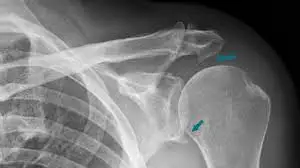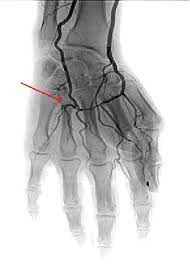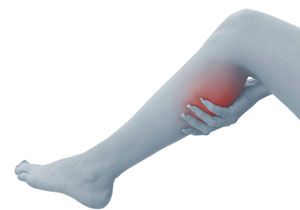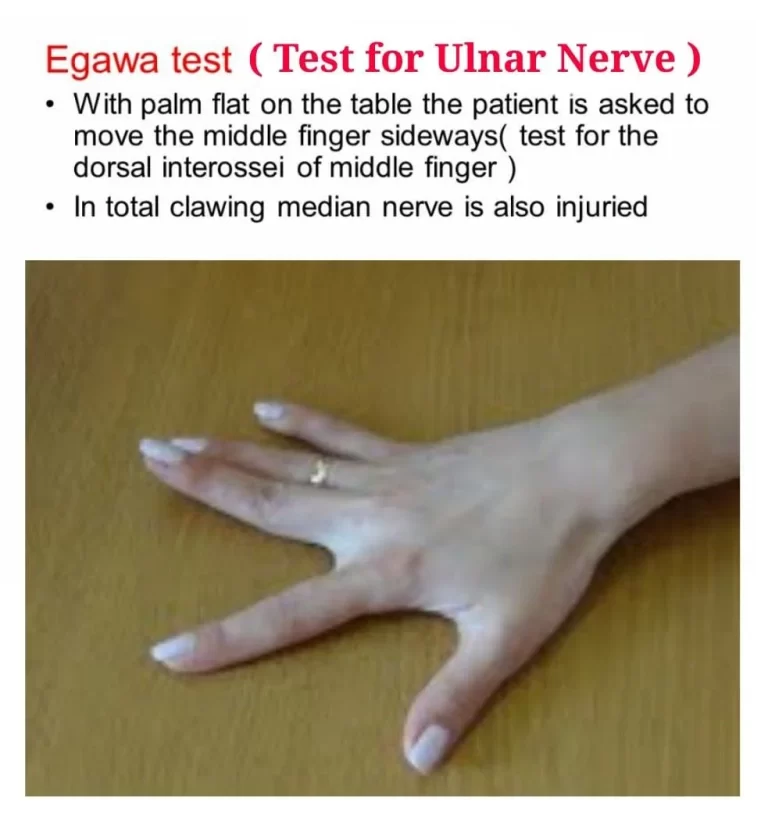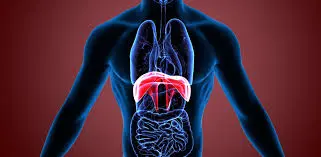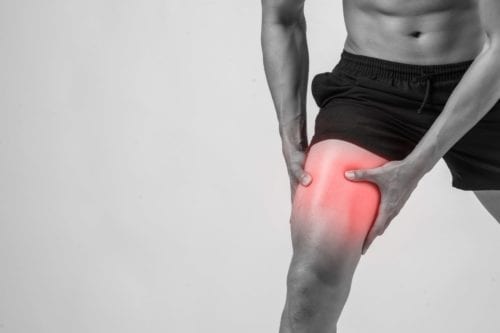Bone Spurs in Shoulders
Table of Contents
What is a Bone Spurs in Shoulders?
Bone spurs in shoulders, also known as osteophytes, are bony growths that form on the edges of bones. They can develop anywhere in the body, but they are most common in the joints, including the shoulders. Bone spurs in the shoulders can cause pain, stiffness, and decreased range of motion.
Bone spurs in the shoulders may not cause any symptoms at first. However, as the spurs grow larger, they can irritate the surrounding tissues and cause pain, stiffness, and decreased range of motion.
Bone spurs in the shoulders are a common condition, especially in older adults. They can cause pain, stiffness, and decreased range of motion. Treatment for bone spurs in the shoulders depends on the severity of the symptoms and may include non-surgical or surgical options.
What Is A Bone Spur?
To put it simply, a bone spur is a tiny pointed, or sharp bony growth on normal bone that is referred to as an osteophyte by medical professionals. They can be caused by injuries or various kinds of arthritis, or they can be congenital (in which case they are known as osteochondromas).
If a person has a family history of bone spurs or similar issues, make sure to let the doctor know if a person is visiting for shoulder, neck, or back pain-related problems.
Bone spurs are frequently smooth and can not cause any discomfort, and a person might not even know if a person has them unless they are pressing or rubbing on nearby soft tissues or bones. If a bone spur in the shoulder is pressing on the ligaments, tendons, or nerves, it may be particularly painful and needs treatment from an orthopedic surgeon.
Bone spurs in the shoulders can develop as an outcome of degenerative joint conditions as well as injuries and general wear and tear. At first, a bone spur in the shoulder can not present any symptoms. But as the underlying cause of the bone spur progresses, a person can begin feeling pain and discomfort in the shoulder area and a person can require medical treatment.
Where may Bone Spurs grow?
Although they may grow from any bone, osteophytes are particularly common in the:
- Foot, particularly the heel (heel spurs or calcaneal spurs), big toe, and ankle.
- Hand or finger.
- Hip.
- Knee.
- Neck.
- Shoulder.
- Spine.
Symptoms of Bone Spurs in Shoulders
- Bone spurs in the shoulders do not always cause symptoms unless they press on nerve endings or they grow larger. But bone spurs caused by arthritis are frequently painful.
- Possible early signs of a bone spur or joint problem in the shoulder involve:
- Perceptible swelling (inflammation)
- Pain that worsens with overhead activities
- numbness or tenderness
- Difficulty sleeping on the affected side
- A visual lump (in the case of large bone spurs)
- Clicking or popping sound in the shoulder
- Muscle weakness in the shoulder
- In some cases, excess bone growth continues undetected until a person is diagnosed with an underlying condition.
- In other cases, progressive worsening of bone spur symptoms can prompt a doctor’s visit and diagnosis.
Talk with a doctor if a person is experiencing the following issues in one or both shoulders:
- pain that slowly gets worse
- sharp pains that radiate across the back or through the affected arm
- tingling sensations along with numbness
- stiffness
- muscle spasms in shoulder
- a reduced range of motion
- You should also see a doctor if the above symptoms interfere with your daily activities, like as:
- sports or other athletic activities
- driving
- picking up or reaching for an object
What are the causes of Bone Spurs in Shoulders?
The causes of bone spurs are generally related to arthritis, involving:
- Osteoarthritis (OA)
- Rheumatoid arthritis (RA)
- Post-traumatic arthritis, a type of OA
- Rotator cuff injuries
- Shoulder instability
- Repetitive overhead activities
- Calcium deposits in the tendons
- Acromioclavicular (AC) joint arthritis
- The likelihood of developing bone spurs improves with age. Age-related conditions, like OA, cause joint tissue to wear down, and
- Bone spurs may grow in their place.
While OA is not the only cause of bone spurs, this kind of arthritis is the most common form that affects the shoulder area. OA can affect areas along the back or top of the shoulder.
Possible causes of bone spurs in the shoulders can involve :
- over-use injuries from playing certain sports, like tennis, baseball, and golf
- work injuries
- automobile accidents
The following factors could also raise the risk for bone spurs:
- lack of regular exercise
- overweight and obesity
- genetics, or a family history of OA and other degenerative diseases
- Certain rheumatic diseases may also impact the bones and joints, improving the risk of developing bone spurs. These involve rheumatoid arthritis (RA) and ankylosing spondylitis (AS).
How are Bone Spurs in Shoulders diagnosed?
Bone spurs frequently develop along with other degenerative conditions like OA. To analyze bone spurs in the shoulders and their underlying cause, a doctor will likely:
- conduct a physical exam to test motion in the shoulders and to see if the bone spur is big enough to detect by touch
- Go over the medical history, involving personal or family history of bone spurs or arthritis
- Ask a person about any history of injuries, involving sports-related incidents, falls, and automobile accidents
- if necessary, order imaging tests such X-rays, MRIs, and/or CT scans.
- order additional lab work, like blood tests, that may assist in detecting rheumatoid factors to help find out possible autoimmune diseases
- Depending on the findings, a person can be diagnosed with bone spurs that have developed as an outcome of an underlying condition, with OA being the most common.
How are Bone Spurs in Shoulders treated?
To treat bone spurs in the shoulders, a doctor will likely suggest medications and home remedies first. Treatments for underlying arthritis that causes bone spurs are also commonly suggested.
Treatment options involve;
- over-the-counter or prescription pain relievers
- steroid injections to decrease inflammation
- disease-modifying drugs for rheumatic diseases
- ice and heat therapy
- resting the affected shoulder
- Massage therapy for pain management
- Physical and/or occupational therapy exercises to increase strength and mobility
- If the symptoms severely limit the range of motion, surgery — like a shoulder arthroscopy — can also be suggested.
At the time of this process, a surgeon makes tiny incisions around the shoulder to create room for a specialized camera called an arthroscope. They will then pull diseased tissue and excess bone that may be causing your pain.
Another infrequent option is shoulder replacement surgery. While not used for bone spurs alone, this surgery can be suggested for significant arthritis symptoms that do not respond to treatment and interfere with daily life.
This surgery includes the removal of diseased joints and replacing them with healthy ones. During surgery, bone spurs are also removed.
Physiotherapy exercise
Along with physical or occupational therapies, a doctor will likely suggest at-home shoulder exercises. These may help alleviate pain while increasing mobility.
Crossover arm stretches
- Start with standing straight with the shoulders rolled back in a relaxed posture.
- Pull the arm gently across the chest, placing the opposite hand above the elbow (not on top of it).
- Hold for 20 seconds prior to repeating with the other arm.
- Alternate arms for up to 5 repetitions each.
Passive internal rotations
These motions work the front of the shoulders. Perform them in the following steps with a lightweight stick:
- Start with Stand up straight, and put the lightweight stick behind the body.
- Hold one end of the stick in one hand, then grip the other side with the opposite hand.
- Slowly pull the stick in a horizontal motion until a person experiences light pressure in the front part of the shoulder.
- Hold this for 20 seconds before repeating on the opposite arm.
- Alternate arms for up to 5 repetitions.
Standing Cable External Rotation
The rotator cuff muscles contain supraspinatus, infraspinatus, subscapularis muscle, and teres minor. These 4 tiny muscles function to stabilize and support the shoulder through its natural movement. If a person works at a desk or computer all day, the shoulders are constantly internally rotated which may lengthen and weaken
these muscles. Strengthen these muscles by completing cable external rotations.
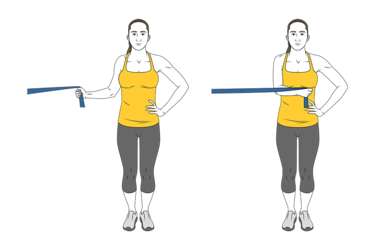
- HOW TO DO IT: On an adjustable cable machine, move the cable until the handle sits between the belly button and the bottom of the chest.
- Then grab the handle in the right or left hand. The elbow should be close to the body with the forearm crossing the belly.
- Pull the cable as far away from the body as you can, keeping the elbow as close to the body as a person can.
- Then gradually back to the initial position.
- Do 5 sets of 10 to 15 repetitions.
Dumbbell Lying Shoulder External Rotation
Cable external rotations are an excellent way to warm up the rotator cuff muscles. The dumbbell lying external shoulder rotation, though, is the best way to train the rotator cuff after a person has finished bench pressing or overhead pressing.
A person will want to use light dumbbells here. The training targets smaller muscles that already help in larger motions so a
a person is not needed to hit them with heavy weight.
- Lie on the side of a yoga mat. Keep the knees slightly bent but stack the legs on top of one another.
- Take a dumbbell and put the elbow against the side of the hip and leg, resting your forearm on the belly. During the exercise, the elbow should work like a small hinge.
- Externally rotate the shoulder and lift the dumbbell it is parallel to the side of the body.
- Perform 2 to 3 sets of 10 to 12 reps per side.
Reverse Flyes
Like the rotator cuff muscles, the rear deltoid is usually neglected or overlooked in training. Reverse flies strengthen the posterior deltoid, but they also recruit the muscles of the rotator cuff. It is an exercise a person should do at the beginning of the chest or shoulder workout and the end as well.
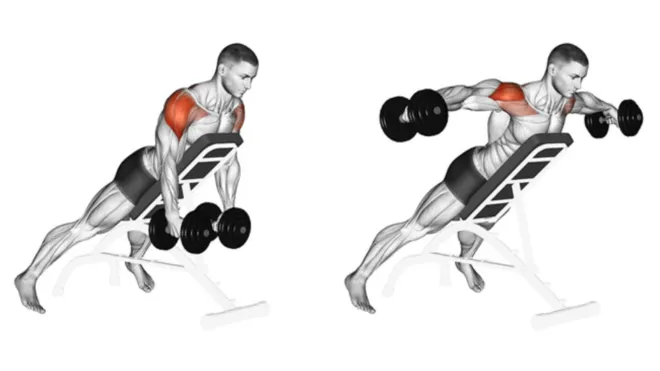
- Take 2 light dumbbells and stand with the feet hip distance apart; alternatively, sit on a workout bench.
- Push the hips back until a person has a slight bend in the knees and the chest is pointed toward the ground.
- The elbows should also have a slight bend in them and the palms face one another.
- Lift the arms, maintaining the softness in the elbow joints, until the arms have reached the same height as the shoulders.
- Pause for a second and then back to the starting position.
- Do 2 to 3 sets of 8 to 10 reps.
Shoulder elevation stretch
This training improves the range of motion in the shoulder joints and stretches the muscles. Doing this exercise regularly should
facilitate daily activities, like reaching for items on shelves. To perform this exercise:
- Start with lying on the back.
- a broom handle or walking stick with both hands, maintaining them shoulder-width apart.
- Gently press the handle or stick
- Gently raise the pole up past the chest, then over the head so that it is almost touching the floor above the head. maintain the arms as straight as possible throughout.
- Drop the handle or stick gently back down to the thighs.
- Perform 2 sets of 5 repetitions once a day.
- A person should share a delicate stretch in the shoulders, back, and chest as the arms move overhead.
Shoulder outward rotation stretch
This activity also needs a broom handle or walking stick. It increases flexibility in the shoulder joints. Follow the steps below:
- Start with Lie on the back.
- Maintaining the upper arms by the sides, bend the elbows and hold the stick out above the chest with the hands shoulder-width
- apart.
- Gently move the pole to the left until a person experiences a stretch in the left shoulder.
- Back to the starting position.
- Repeat on the other side.
- Perform 5 sets of 15 repetitions once a day.
Shoulder blade rotations
This rotation stretches the shoulders to promote an improved range of movement. To perform this exercise:
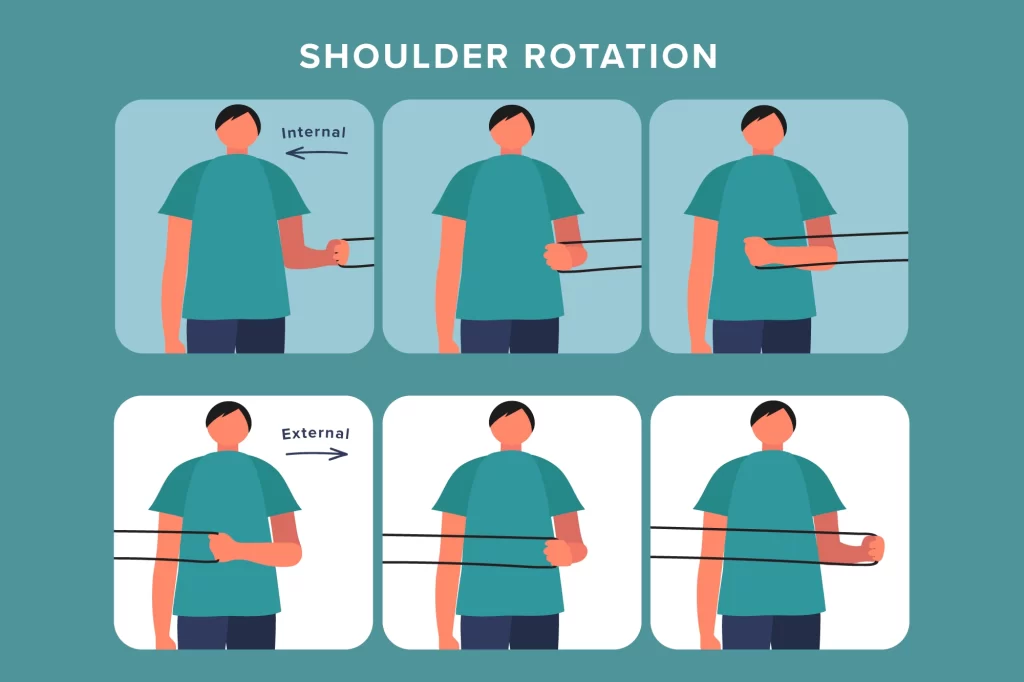
- Start with standing in a neutral position with the hands at the sides.
- Raise the shoulders towards the ears and hold for 10 seconds.
- Slowly squeeze the shoulder blades together and hold for 10 seconds.
- Pull the shoulder blades downward and hold for 10 seconds.
- Repeat 12 times.
Pendulum exercise
The pendulum exercise helps reduce pain and relax the shoulder muscles. It applies the following series of actions:

- Start with bending forward and resting a hand on top of a chair or counter for support and balance. Use the arm that is less painful to do this.
- Allow the other hand to hang down.
- Using movement from the legs and hips, slowly swing the hanging hand back and forth and side to side in a circular motion.
- Repeat this 20 times in each direction once a day.
Door lean
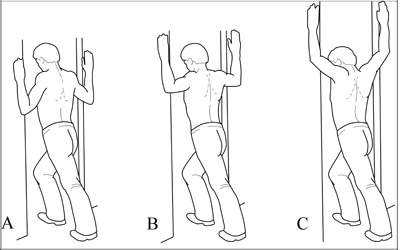
- The door lean may help stretch the muscles in the shoulders and increase resistance in the joints. Do the exercise as follows:
- Start with standing facing toward a doorway and raise both hands above the head.
- On either side of the entrance, place a hand.
- Slowly lean forward until a person experiences a comfortable tension in the shoulders.
- Hold this position for 10–20 seconds.
- Repeat 5times.
Door presses
Door press exercises may help build strength in the shoulder joints. To perform these exercises:
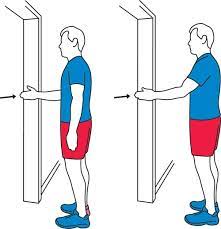
- Start with standing in a doorway and flex one elbow to a right angle with the thumb on that hand pointing toward the ceiling.
- Push the back of the wrist into the doorframe.
- Hold for 10 seconds.
- Repeat with the palm of the hand, using the other side of the doorframe.
- Do 5 sets of 5 repetitions on each side.
Strengthen the postural muscles
Strengthening the postural muscles will increase overall posture, allowing the shoulders to move more easily in all directions. These activities need an exercise band, which it is likely to buy in a sporting goods store or online.
To perform these exercises:
- Start with standing straight with the shoulders back.
- Loop the practice band behind a solid, vertical object and hold one end in either hand.
- Relax the shoulders and bend your elbows at the sides.
- Pull the elbows backward while squeezing the shoulder blades together.
- If the exercise band does not give any resistance, take a step back or loop the ends of the bands around the hands.
- Hold for 10 seconds.
- Perform 5 sets of 12 repetitions once a day.
Arm lifts (standing)
- Place the hands behind the head so the elbows are pointing to the sides and pressed back as far as a person may.
- Maintain for five seconds.
- Then put the hands behind the back, again keeping the elbows pointing out and pressed back as far as a person may.
- Maintain for 5 seconds.
- Do every motion 5 times.
Resistance band stretch for shoulders
- Maintain either a yellow or red elasticated resistance band in the hands, with the fingers curled around it facing inwards.
- The elbows should be bent at waist height, just above the hips, with the arms and hands in line with the shoulders.
- Keeping the elbows in the same position at the sides, stretch the band to the furthest comfortable point and hold for a count Slowly bring the hands back in line with the shoulders.
- Repeat this 5 times. Try to perform this exercise 3 times a day.
Backward table press
- Start with Standing upright with the back to the table and the palms against its edge, gently push the shoulder blades back and the hands against it.
- A person is not trying to move the table, just to meet its resistance.
- The exercise should help strengthen the muscles around the shoulder.
Table slide
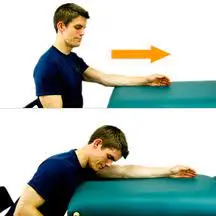
- Start with Sitting upright, with the knees flexed and feet flat on the floor beneath them at hip-width apart, flex the elbows, and rest the palms of the hands on a flattened cloth on the tableland in front of you.
- Slowly slide the cloth forward across the table, tilting from the waist and keeping a straight back.
- Slide both hands as far as is comfortable, and aim to straighten the arms.
- Allow the head to gently drop forward and hold for 5 seconds.
- Gently slide back and repeat.
If it is uncomfortable to place the palms flat on the table have them facing each other for this exercise.
Bone Spur Treatments and Home Care
To reduce pain and bring down swelling, a person may try one of these over-the-counter pain relievers:
- Acetaminophen (Tylenol)
- Ibuprofen (Advil, Motrin)
- Naproxen sodium (Aleve)
- These may cause side effects, especially if a person takes them in large doses or for a long time. If a person has taken them for more than a month, ask the doctor if you may try a different treatment.
Bone Spur Prevention
Bone spurs generally may not be prevented if they are the outcome of the natural wear and tear of arthritis. But a person may take these steps to avoid bone spurs caused by other things:
- Model shoes with a wide toe box, good arch support, and sufficient cushion to pad each step. Get the shoes fitted by a professional so they do not rub against the feet when a person walks. Wear thick socks to prevent the shoes from rubbing.
- Consume a well-rounded diet with plenty of calcium and vitamin D to protect the bones.
- Do regular weight-bearing exercises like walking or stair climbing to keep the bones strong.
- Try to keep the extra pounds off.
Conclusion
Bone spurs in the shoulders are a common condition, especially in older adults. They can cause pain, stiffness, and decreased range of motion. Treatment for bone spurs in the shoulders depends on the severity of the symptoms and may include non-surgical or surgical options.
Non-surgical treatments are often effective for relieving pain and improving range of motion. These treatments may include rest, ice and heat therapy, over-the-counter pain relievers, physical therapy, and corticosteroid injections.
Surgery may be recommended if non-surgical treatments are not effective or if the bone spurs are causing severe pain and disability. Surgery to remove bone spurs is a relatively simple procedure and is usually performed on an outpatient basis.
After surgery, most people are able to return to their normal activities within a few weeks. However, it is important to follow your doctor’s instructions carefully during the recovery period.
If you have bone spurs in your shoulders, it is important to talk to your doctor about the best treatment options for you. With the right treatment, most people are able to manage their symptoms and live active and fulfilling lives.
FAQ
They harm your muscles, tendons, or bones, frequently as a result of osteoarthritis. There may be no symptoms or need for therapy for these smooth growths. As you become older, bone spurs are prevalent. Over the age of 50, they are present in around 60% of women and 80% of males.
Removal of Bone Spurs: Because the shoulder’s structural integrity is preserved, recovery takes only 6 to 8 weeks.
Once created, a bone spur is unlikely to dissolve on its own. However, this does not indicate that you must tolerate the discomfort. This is due to the fact that the Houston foot specialist can give pain relief without requiring bone spur surgery.
Vitamins and minerals can help protect against bone spurs. If you have osteoarthritis, it is extremely crucial to avoid calcium deficiency. Because magnesium and vitamin D are required for calcium absorption, you should ensure that your levels are adequate.
The most prevalent cause of bone spurs is joint deterioration caused by osteoarthritis. As osteoarthritis erodes the cartilage that cushions the ends of your bones, your body attempts to compensate by forming bone spurs near the affected area.
References
Garewal, D. (2021, January 3). Bone Spurs In Your Shoulder Guide – Melbourne Arm Clinic. Melbourne Arm Clinic. https://melbournearmclinic.com.au/bone-spurs-in-shoulder/
Cherney, K. (2021, August 30). All about bone spurs in the shoulders. Healthline. https://www.healthline.com/health/bone-spurs-shoulder
Bone Spurs. (2017, January 24). WebMD. https://www.webmd.com/pain-management/what-are-bone-spurs
Professional, C. C. M. (n.d.). Bone Spurs (Osteophytes). Cleveland Clinic. https://my.clevelandclinic.org/health/diseases/10395-bone-spurs-osteophytes
Samuels, M. (2011). Shoulder spur exercise. LIVESTRONG.COM. https://www.livestrong.com/article/495751-shoulder-spur-exercise/
Kandola, A. (2023, February 16). Seven exercises for shoulder arthritis. https://www.medicalnewstoday.com/articles/322998#seven-exercises
Exercises for the shoulders. (n.d.). Versus Arthritis. https://www.versusarthritis.org/about-arthritis/exercising-with-arthritis/exercises-for-healthy-joints/exercises-for-the-shoulders/

